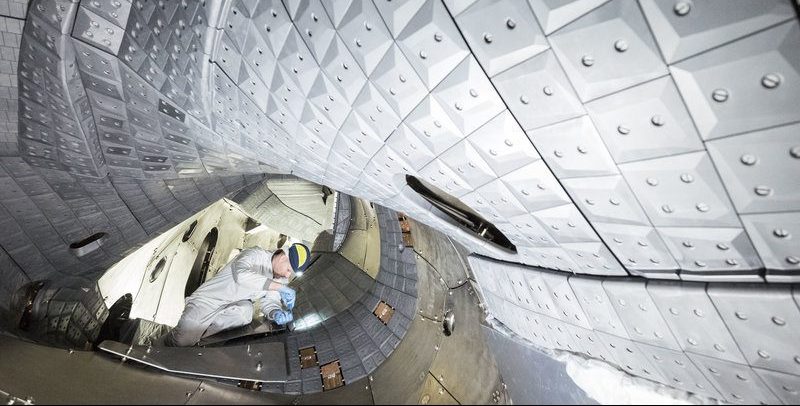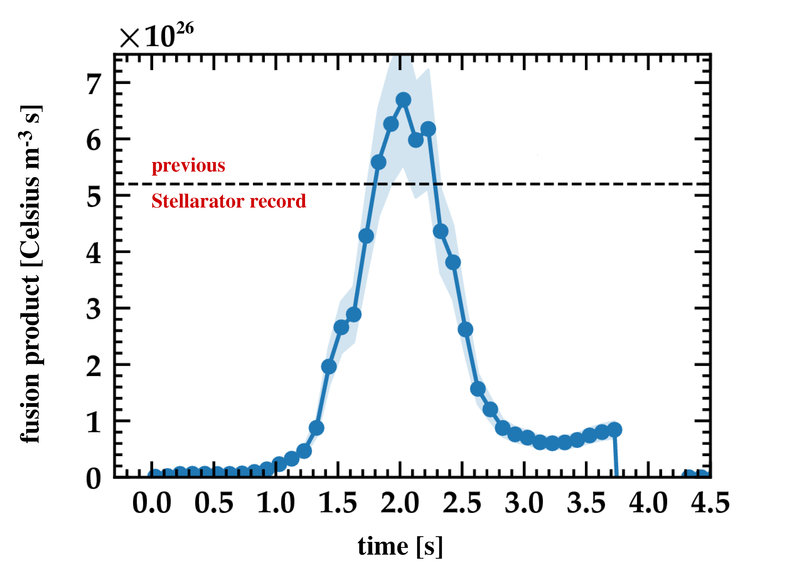
In the past experimentation round, Wendelstein 7-X achieved the stellarators’ world record for the fusion product as a result of reaching higher temperatures and densities of the plasma as well as longer pulses. Wendelstein 7-X attained a fusion product of 6·1026 degrees x second per cubic metre which is the world’s stellarator record and gives first confirmation that the optimisation carried out for its design has been successful.
Wendelstein 7-X, located at Max Planck Institute for Plasma Physics (IPP) in Greifswald, is the world’s largest fusion device of stellarator type. Its purpose is to evaluate the main components of a future fusion power plant and it is expected to achieve operations of up to 30 minutes of continuous plasma discharge by 2021.
Since September 2017, the plasma vessel of Wendelstein 7-X is fitted with interior graphite cladding. Given the fact that graphite is a neutron moderator, meaning it reduces the speed of fast neutrons, this cladding protects the vessel walls and allows higher temperatures and longer plasma discharges. On top of that, ten divertor modules have also been installed in the plasma vessel. The divertors control the purity and density of the plasma. Along with impurities, the impinging particles are neutralised and pumped off, hence protecting the wall areas where the particles escaping from the edge of the plasma ring would impinge.
As a result of these updates, plasmas lasting up to 26 seconds could be produced in the latest experimental campaign. The attained pulse length as compared to the first campaign was more than fourfold. A heating energy of up to 75 megajoules could be fed into the plasma, this being 18 times more than in the first operation phase without a divertor. The heating power could also be increased, which is a prerequisite to high plasma density.
In this way, a record value for the fusion product was attained: at an ion temperature of about 40 million degrees and a density of 0.8·1020 particles per cubic metre, Wendelstein 7-X attained a fusion product of 6·1026 degrees x second per cubic metre, the world’s stellarator record. Furthermore, the 200 milliseconds energy confinement time achieved indicate that the numerical optimisation on which Wendelstein 7-X is based might be in a good line of research for application in a future power plant. The energy confinement time is a measure of the quality of the thermal insulation of the magnetically confined plasma and is determinant for a reactor of this kind.

The present graphite tiles of the divertor will be replaced this Autumn by carbon-reinforced carbon components that will additionally be water-cooled, what is expected to enable discharges lasting up to 30 minutes. It will be then when it will be checked whether Wendelstein 7-X permanently meets its optimisation objectives.
Source: IPP
